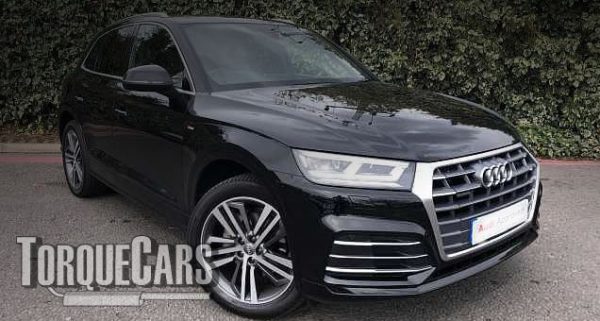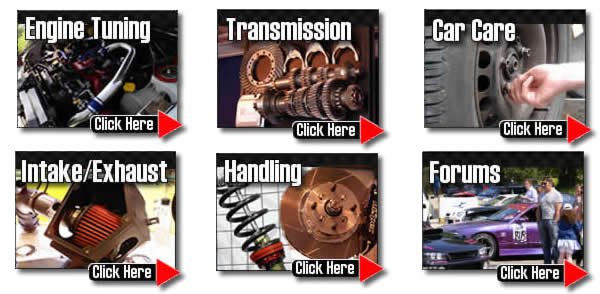Audi Q5 Tuning
"Thank you for reading my Q5 tuning guide."
Released in 2008 to much doubt that Audi needed a mid sized SUV in it's line up it's gone on to be a very popular car with a wide ranging appeal.
Engine choices were limited but well specified namely two petrol varients, 2.0 L TFSI and the more powerful Quattro powering 3.2 L V6 FSI and diesel options were 2.0 L TDI diesel and the now common 3.0 L TDI diesel V6.

All engines offer a good ratio of power and economy (if driven carefully) although the 142ps version of the diesel can feel a little underpowerd until remapped it still remains a good option.
From 2011 we see the introduction of a Hybrid option thankfully setup for power rather than economy.
The Q5 is a good car tuning project to play with. With the right mods your Q5 can be transformed into a stunning project. Don't waste money, do your homework and follow our unbiased guides to each performance upgrade to avoid wasting money.

Improving the handling for DIY mechanics first priority in your Q5 tuning project. We would go to a maximum drop of 35mm on most models. You risk rubbing on the arches and in our opinion seriously compromise the handling if you go lower than this.
Our aim in Q5 engine tuning should be to increase peak power and Torque at the top end.
Smaller engines do not provide much of a return in terms of power so start with a bigger engine. Engine swaps are a good option if you have a small engine size.
The Tiptronic and stronic gearboxes are very responsive, whilst we prefer the paddle shifting option to give us a little control the sport mode performs better than most drivers.
Q5 Engine Tuning.
This list of the stages and motorsport kits are usually fitted by our members, decide how far you want to go before you start.
Getting the right performance upgrades for your planned usage of the car is essential. Stage 3 competition upgrades just won't work well on the road hard to control in slow traffic.
Modifying to STAGE 1:
Alloy wheels, Lighter flywheel, Sports exhaust, Remap, Panel air filter, Suspension upgrade (drop 30mm but focus on the alignment more than anything else).
Modifying to Stage 2:
fuel pump upgrades, high flow fuel injector, Power/Sport clutch, Fast road cam, Ported and polished head.
Modifying to Stage 3:
Engine balancing, Adding or upgrading forced induction (turbo/supercharger), Internal engine upgrades (pistons/head/valves), Sports gearbox, Competition cam.
Your targets when modding the engine should be a nice flat torque output. You want to avoid sending all the power to be at the top end of the rev range unless you are creating a motor sport car.
The aim of our tips is to give a starting base of tuning upgrades and point you in the right direction, our forum is best place to go if you need more detailed advice and tips on your modified car project, the best performance parts and all aspects of modding cars.A fast road camshaft proves to be one of the best NASP power modifications you can do with a single part fitted to your engine.
The intake and exhaust flow play a large part in your cars power band, but be careful here, getting this wrong can upset the idle and make the car impossible to drive in traffic.
You'd need to follow a camshaft upgrade with other mods and finish with a performance chip for the best performance gains.When pushing up the power you will need to increase to the fuelling. More power needs more fuel.
If you find you experience flat spots and surges after your motorsport mods you should check the fuelling and try a higher octane fuel as well. Uprating the injectors is another beneficial modification and will deliver sufficient fuel. Uprate the fuel pump to cope with the extra fuel requirements of your tuned Q5s uprated injectors.
Intake and Exhaust Tuning.
The next area for modification is the intake and exhaust. Please note that WE DO NOT RECOMMEND INDUCTION KITS, unless you have tuned your car extensively and are finding that the standard air intake has become a restriction.
For most Q5 engines TorqueCars would suggest you just go with a washable panel air filter, the standard air boxes flow really well, even when working with a tuned engine.
On heavily tuned engines and turbo vehicles an induction kit will help release the power providing you address the problem of needing cold air but you'll need to pulling an extra 50bhp from the engine to need more airflow.
Sports exhausts balance the flow of air through the engine. But if the exhaust is too large, ie: over 2.5 inches bore, you will lose much of the flow rate and end up losing power and torque.
Diesel engines DO NOT NEED larger exhausts, the low RPM characteristics of the engines are more than assisted by the OEM exhausts, but having fewer bends and seams in the exhaust will help all models.
Getting the cylinder head gas flowed will assist in flowing more air into each cylinder. This is definitely a job for a professional with a flow bench and we would ask for a 5 angle valve job and port matching.
Your clutch can fail if it starts to fail and the standard clutches are only ever good for power gains of up to 40%. Fit an upgraded clutch to avoid power leak through the transmission. Turbo engines are just asking to be Reprogrammed. You will see big power gains on most modern turbo charged cars including diesels making a remap one of the most cost effective and big modifications for your money.
We've also seen some tuners toying with twincharged applications and making some very high power figures.
Adding forced induction will see large power gains but this is usually too expensive to be cost effective. Turbos are generally harder to add than a supercharger. It is more challenging to map a turbo as the boost builds exponentially with revs.
It is simpler to map a supercharger because the boost is correlating to engine speed on a linear curve. To cope with forced induction you will usually need to decrease the compression ratio of the engine .
Alloy wheel upgrades.
The benefits of alloys include reducing your unsprung weight and better brake cooling via the extra air flow they allow. It is worth noting that although they can look cool on the Q5 large alloys will actually decrease your performance. The larger you go the lower your acceleration will be - this to the change in your effective final drive ratio.
Although some people have installed larger rims without problems we would restrict ourselves to an 18 inch rim size as the maximum or at a push the 19's (if you can find a lighter rim).
But we would avoid 20's or higher even though they look really nice, they just add too much unsprung weight and in our opinion compromise the handling too much.
For more information on Tuning your car please join us in our friendly forum where you can discuss Q5 options in more detail with our Q5 owners. It would also be worth reading our unbiased Audi tuning articles to get a full grasp of the benefits and drawbacks of each modification.
Please help us improve these tips by sending us your feedback in the comments box below. We love to hear what our visitors have got up to and which mods work best for them on each model of car. Comments are used to improve the accuracy of these articles which are continually updated.
If you liked this page please share it with your friends, drop a link to it in your favourite forum or use the bookmarking options to save it to your social media profile.
Check out TorqueCars new YouTube channel, and see their awesome new content...
Feedback
Please use our forums if you wish to ask a tuning question, and please note we do not sell parts or services, we are just an online magazine.
Help us improve, leave a suggestion or tip
